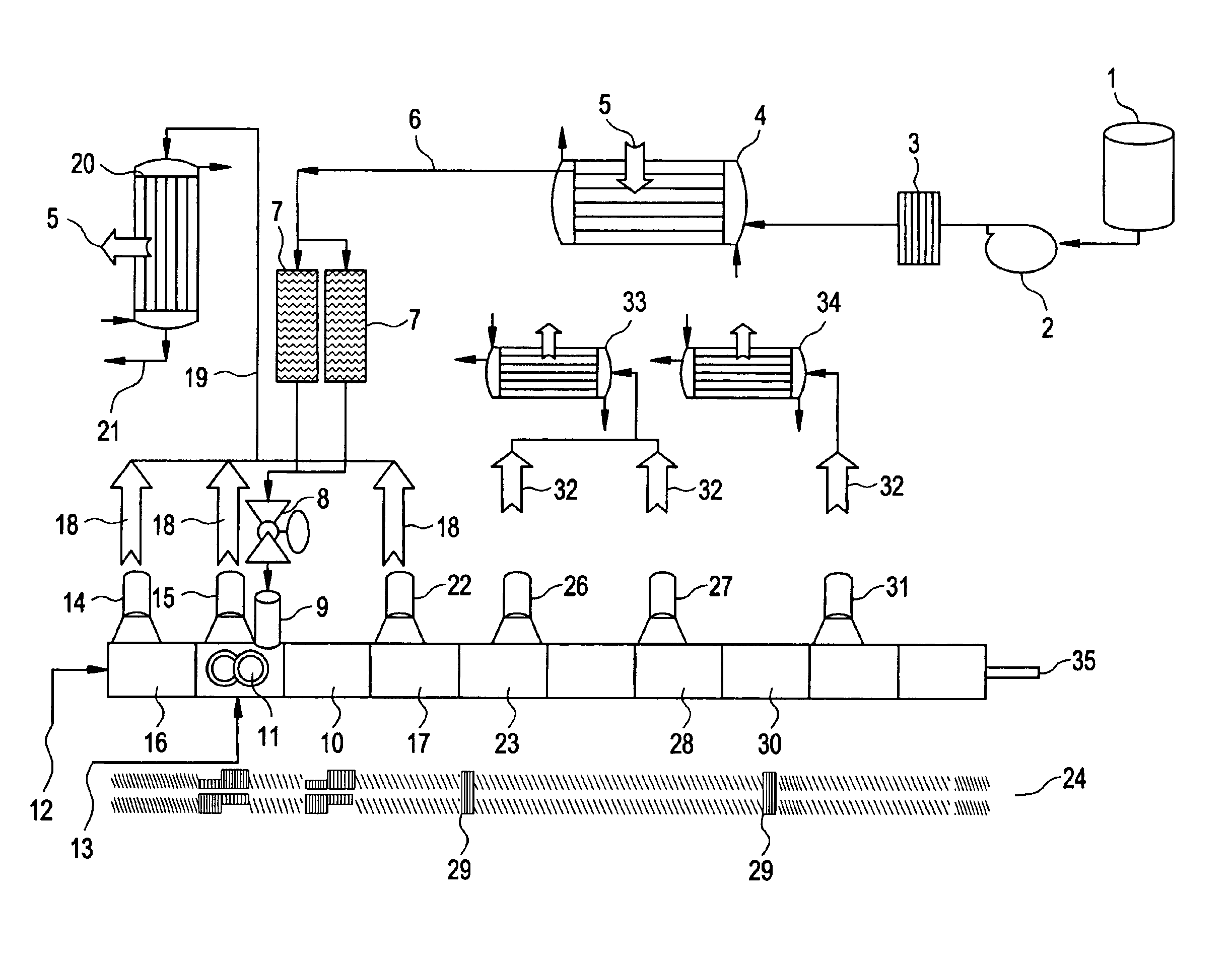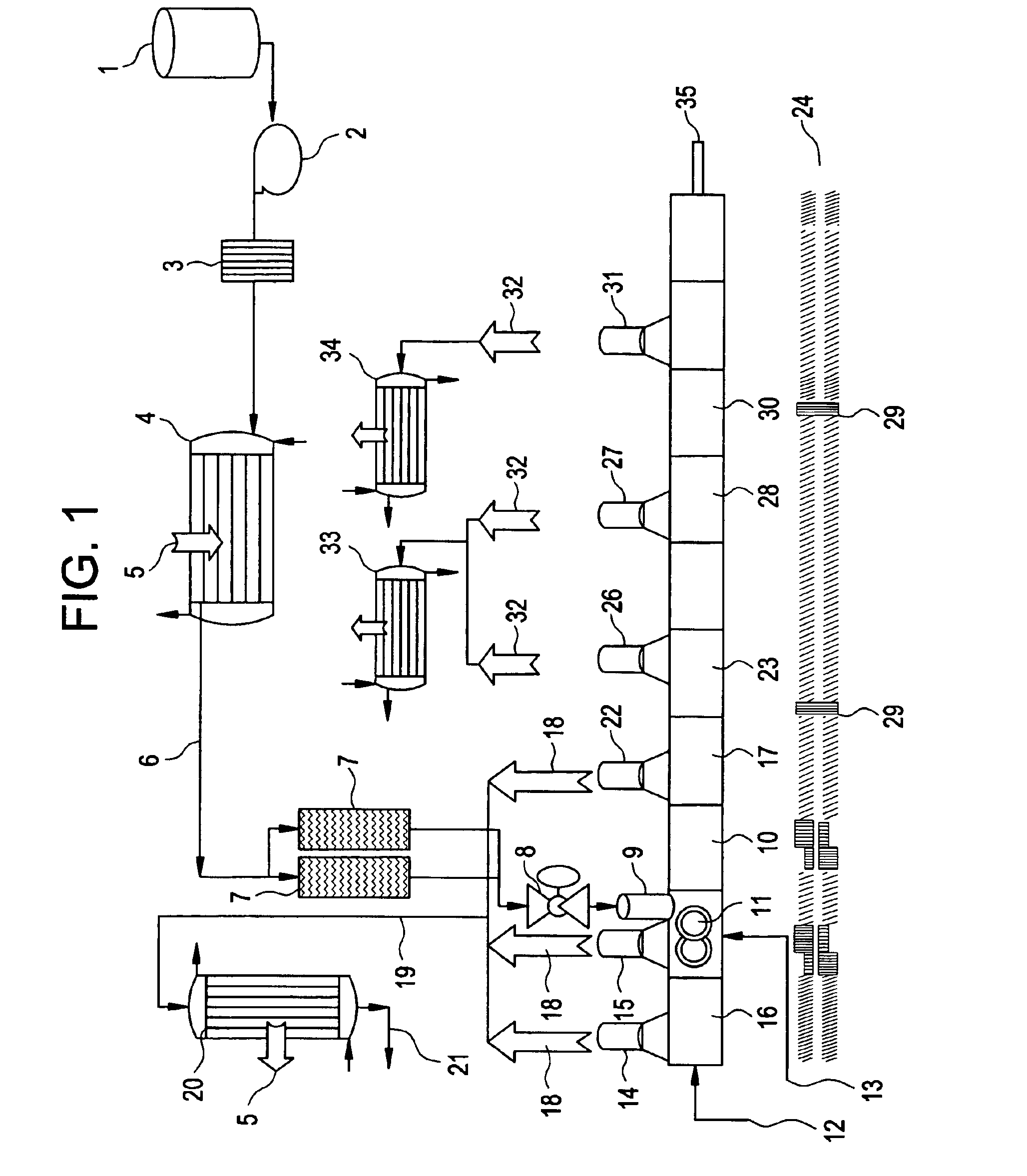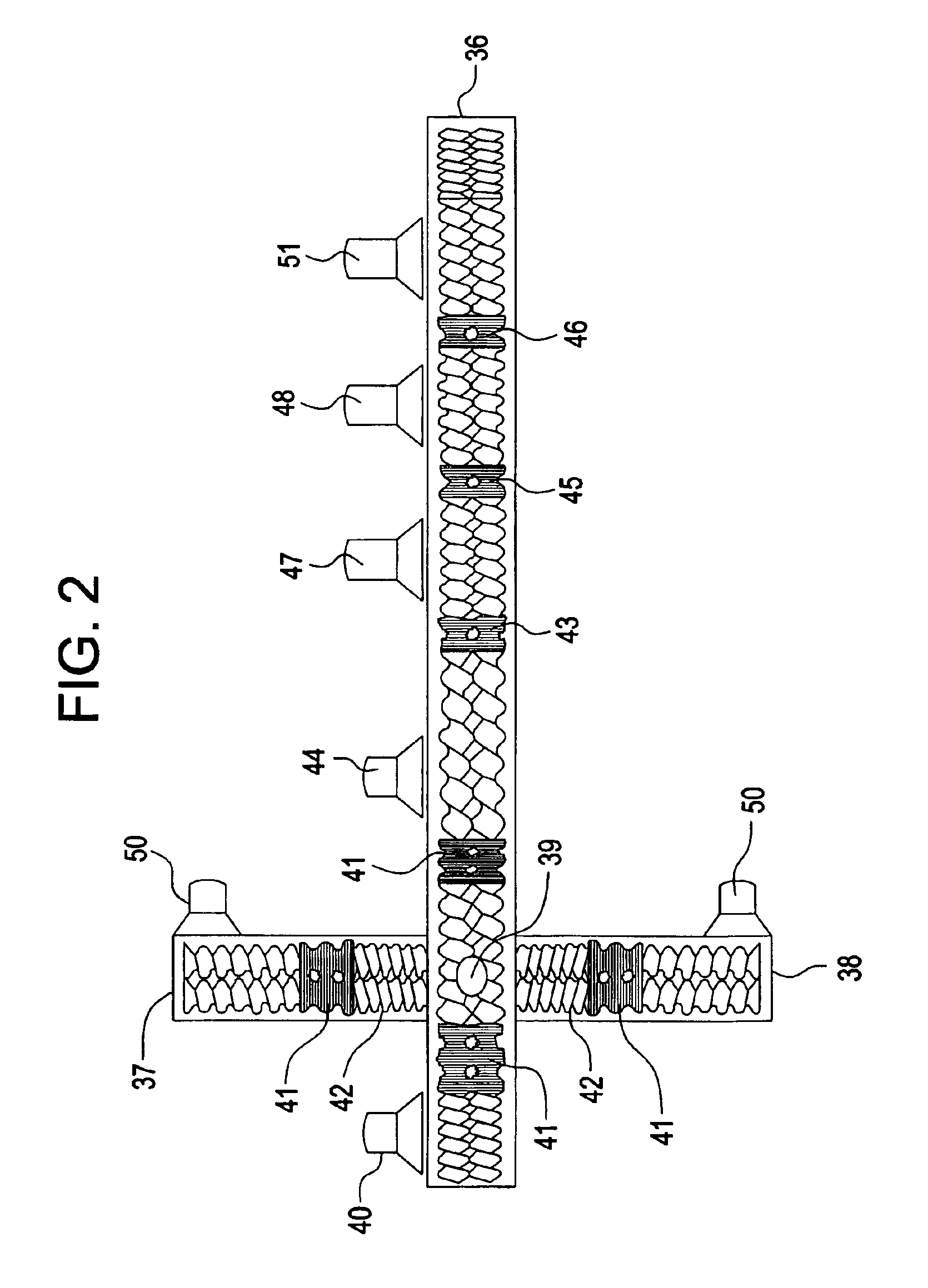Method of separating a polymer from a solvent
a polymer and solvent technology, applied in chemical/physical/physical-chemical stationary reactors, chemical apparatus and processes, chemical/physical/physical-chemical processes, etc., can solve the problems of high heat, extended compounding and extruding times, and high shear rates
- Summary
- Abstract
- Description
- Claims
- Application Information
AI Technical Summary
Benefits of technology
Problems solved by technology
Method used
Image
Examples
examples
[0075]The following examples are set forth to provide those of ordinary skill in the art with a detailed description of how the methods claimed herein are carried out and evaluated, and are not intended to limit the scope of what the inventors regard as their invention. Unless indicated otherwise, parts are by weight and temperature is in ° C.
[0076]Molecular weights are reported as number average (Mn) or weight average (Mw) molecular weight and were determined by gel permeation chromatography (GPC) using polystyrene (PS) molecular weight standards. Example 5 provides a general illustration of the method. ULTEM® 1010 polyetherimide is commercially available from GE Plastics, MT Vernon, Ind. Throughout the Examples and the Comparative Examples the system used to effect polymer-solvent separation comprised a co-rotating, intermeshing (i.e. self wiping) twin-screw extruder.
[0077]Examples 1-4 and 6-7 were carried out using the same extruder devolatilization system and same 30 percent sol...
PUM
| Property | Measurement | Unit |
|---|---|---|
| temperature | aaaaa | aaaaa |
| cracking pressure | aaaaa | aaaaa |
| temperature | aaaaa | aaaaa |
Abstract
Description
Claims
Application Information
 Login to View More
Login to View More - R&D
- Intellectual Property
- Life Sciences
- Materials
- Tech Scout
- Unparalleled Data Quality
- Higher Quality Content
- 60% Fewer Hallucinations
Browse by: Latest US Patents, China's latest patents, Technical Efficacy Thesaurus, Application Domain, Technology Topic, Popular Technical Reports.
© 2025 PatSnap. All rights reserved.Legal|Privacy policy|Modern Slavery Act Transparency Statement|Sitemap|About US| Contact US: help@patsnap.com



